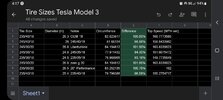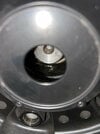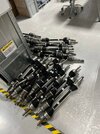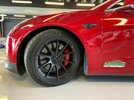The point about the LR RWD is a good one. You put an oil cooler and Partybox on it, and it's good for a twenty minute session, whereas a Performance is as bad as seven minutes.@NA&CH I feel like an LR RWD might be a great starting point for a track focused build. With an MPP Party Box of course. I've zero experience to back this up, it's just a thought. I also don't know if Tesla still made LR RWD in 2020.
Of course if you're after outright speed then just get a Performance.
2021+ refinements and heat pump are worth getting for daily driving in my opinion (since older cars aren't even priced much lower right now), but for a track focused build save money by starting with an older car (whichever trim you choose).
This all depends on your goals. If you are going for fastest lap, such as Time Attack, a Performance makes sense.
If you're just going to have fun, learn, and enjoy an HPDE, the LR RWD is the better car. It's also phenomenally fun as a DD with the Partybox; and cheaper.






